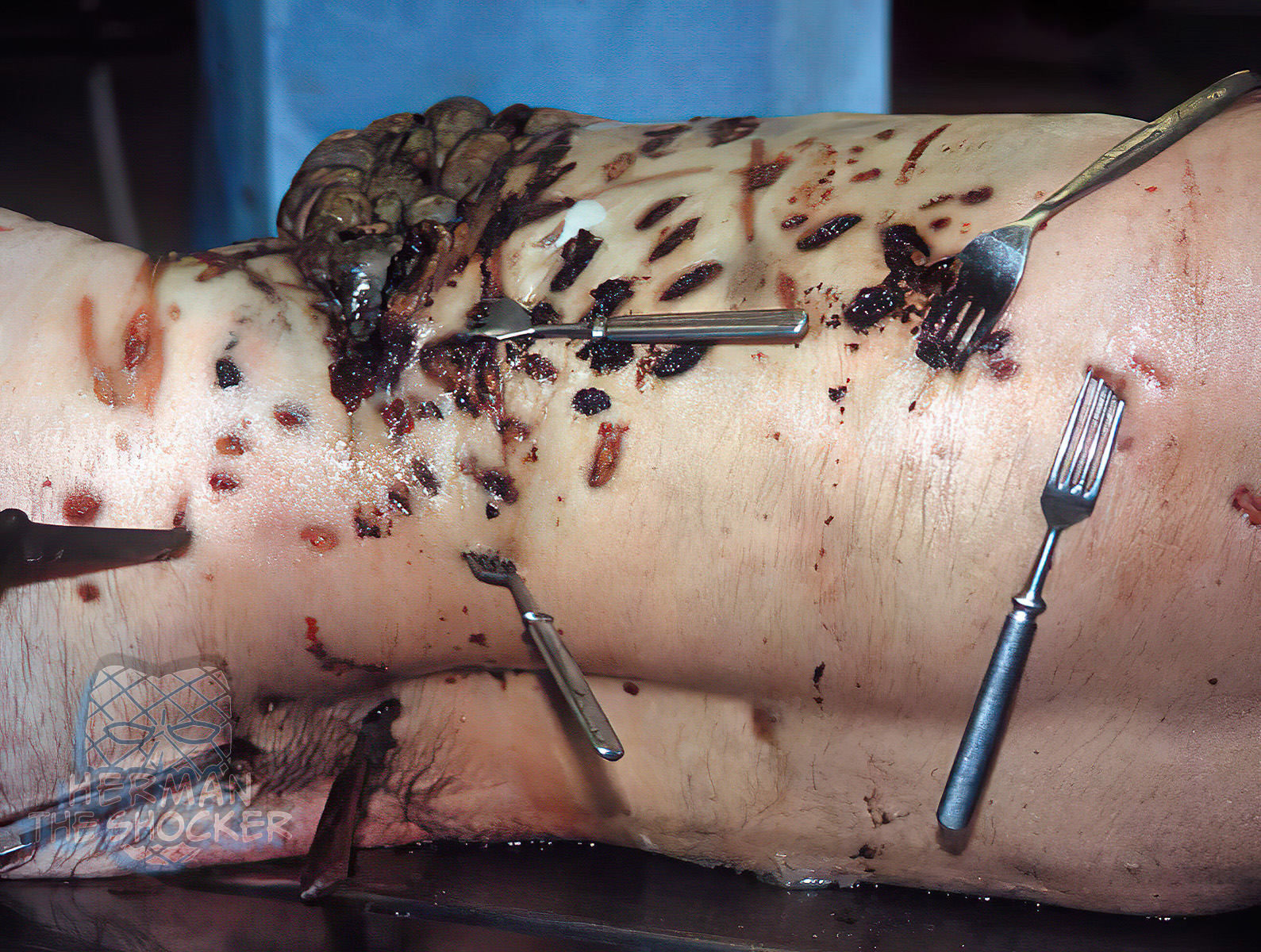This individual was murdered and stabbed with various kitchen utensils, no further info about this case. The general features of injuries from knives apply equally to other sharp objects that cause incised and stab wounds. Razors and broken glass have extremely sharp edges so that, when applied tangentially or at a small angle to the skin, undercutting may be a marked feature. The wound may appear as a shallow slice which bleeds profusely and, in a hairy area such as the scalp, it will reveal cut hair bulbs on the shelved surface. Deliberate wounds with razors or sharp knives may exhibit patterns or even words; these may occur in gang fights or sadistic homicides.
Glass can be employed as a cutting weapon, again typically in bar fights or gang vendettas, where a broken bottle may be held by the neck or a smashed beer tankard by the handle. Though these formidable weapons are usually used for slashing, long slivers of glass can act – sometimes inadvertently – as stabbing agents. The sliver may break off and remain in a deep wound, which may be overlooked if the entry is small.
As many casualty surgeons have learned to their cost – or to the cost of their medical protection society or medical insurers – glass is almost invariably radio-opaque, even though this is either unknown or even denied by the doctor. Numerous civil actions for negligence have occurred – though usually in non-fatal circumstances – but, on occasion, the first person to find a deep fragment of glass in a vital position has been a forensic pathologist.
Latest posts








